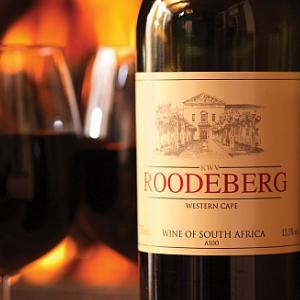“Roodeberg is the jewel in the Cabernet crown, the beach-party-of-my-youth wine, the wine my dad ordered at the Nederlandse Club in Cape Town when we lunched there together in the 60’s, the wine we drank at my wedding in Worcester – the list goes on and on. From trivial to life-changing events, Roodeberg was there. The memories are endless, and the wine was sublime.”
“Tonight, not knowing what to expect, my father and I opened a bottle of 1982 Roodeberg red which, just for your info, turned out to be very enjoyable.”
“In 1969, at the end of my second year at Stellenbosch University, the professor of Anatomy held a party for the students who had passed the year. It was my introduction to Roodeberg, and what an intro it was!”
“This evening my wife, son and I drank a bottle of your Roodeberg 2005, a superb wine that accompanied a T-bone steak, a rump steak and lamb T-bone steaks.”
These are just a few of the memories people have to share. For more than sixty years, this iconic South African wine has been part of the country’s fibre and through historic world events and personal milestones, Roodeberg was there. Ironically enough, the wine wasn’t widely available in South Africa until 2004 and not easy to get hold of before then. But it has always had iconic status in the country – it used to be said that, “for its lucky owner a bottle of Roodeberg [could] procure test tickets, biltong, the use of a beach cottage . . . name it.” And, that to South Africans abroad “a glass of the precious liquid [was] like a hug from home”. Source: Wynboer January 1986.
The first vintage was developed by Dr Charles Niehaus, a pioneer of South Africa’s sherry industry and a legend in KWV’s wine making heritage. In 1941 he took over the fledgling range of dry wines from the former chief wine expert Dr Abraham Perold. These consisted of two reds, one full-bodied and one light-bodied, and a white. The reds were known as Roodeberg Number One and Roodeberg Number Two, but the suffixes were later dropped to avoid the misconception that one was inferior to the other.
“So we decided to develop the lighter No 1 around Cabernet and to call it KWV Cabernet Sauvignon, while the name Roodeberg was retained for the full bodied No 2. That was a good decision, if I may say so,” said Dr Niehaus.
The wine didn’t happen overnight, but evolved from a succession of blends. Dr Niehaus had been carefully experimenting with other varieties in the blend. But it was the advent of Shiraz at the Cape in the late forties that brought about a drastic change. Right from the start Dr Niehaus formed part of a small band of proponents for this cultivar, the ideal component for a deep new dimension in his famous creation.
“That was the turning point. After that Roodeberg really became Roodeberg,” he said. According to his successor, Pietie Theron: “Dr Niehaus left his spirit behind in the wine. It imparted a style to Roodeberg which has never changed, irrespective of [the] clamour for new, fast changing trends.”
Today Roodeberg is made by winemakerThys Loubser – who coincidentally shares a name with the CEO of KWV as well! “Each vintage brings new challenges, but we strive to continually improve on the previous vintage,” says Thys. He is passionate about all the aspects of making wine and pays meticulous attention to the entire process, from choosing the right blocks of grapes to deciding on the exact time to harvest to getting the blend just right. To Thys, blending is a very personal and emotional process. “Style is more important than a recipe. Because vintage conditions and grape quality differ from year to year, we have to choose the best we can for a specific vintage to ensure consistent quality.”
Roodeberg is not only steeped in history and tradition, but also keeps evolving to stay in touch with modern lifestyles and tastes. A true icon, Roodeberg is set to continue to make special moments, big or small, even more memorable.

